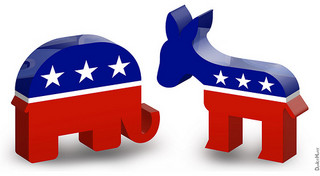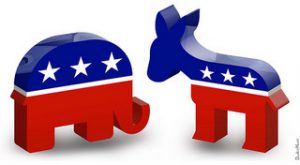Two Parties: Two HispanicLatino Vice Presidents

 By Jesse Treviño, HispanicLatino
By Jesse Treviño, HispanicLatino
The attention that the HispanicLatino vote received during the presidential campaign and future demographic projections of its growth have caused the media and obsessive politico-types to speculate about when the first President of HispanicLatino descent will be sworn into office. The strategic placement of the HispanicLatino population in critical states has made a deep impression on political strategists that appears lasting and could accelerate the election to the Presidency a member of a group that only this year surpassed 10 percent of the national voting electorate. It seems absurd that people on television are fantasizing about future administrations, but the emergence of the telegenic Castro twins of San Antonio on the national scene had fueled the chatter.

Increasing the possibility by a few degrees is the notion already taking hold in some quarters that the very existence of national nominating conventions will force both parties to choose a HispanicLatino for Vice President in 2016 – a now-traditional route to the Oval Office. It seems plausible for an odd reason: That the party convening first would not risk not nominating a HispanicLatino for fear the other party would at its own convention a week later. Not everything makes sense in politics. The selection of a vice presidential running mate, of course, takes in a number of geographic and other political considerations, but seldom has the timing of the conventions driven the choice for the second spot on the ticket. Choosing a HispanicLatino running mate in 2016 in anticipation of the other party doing probably would not seem extraordinary to some observers driven on television already to revisit repeatedly the contours of the new electoral lay of the land. I wonder how long before Nate Silver gives us the statistical betting line.
Conflating the conjecturing is that both parties now have HispanicLatinos of significant standing and visibility from which to choose. On the Democratic side, a plethora of candidates are available from California to New York. More strategic thinkers would desire a vice presidential nominee from the swing states of Arizona, Colorado, Nevada or Florida. A HispanicLatino from Ohio would be a lock but no such animal exists. If Democrats put themselves to work to make Texas competitive for 2016, the temptation of wrenching away 38 electoral votes from the Republican electoral base would be too great to not put a HispanicLatino from Texas on the ticket. But it remains to be seen how much tactical progress can be made in a state whose demographic composition seems ripe for a Democratic takeover. The state Democratic party in Texas is only now stirring from the leaderless shambles into which it cratered with the death of Sen. Lloyd Bentsen, the defeat of Gov. Ann Richards and the indictment and conviction of former Attorney General Dan Morales on federal corruption charges.
On the Republican side, the pickings are not slim. It is a given that Sens. Marco Rubio of Florida and Ted Cruz of Texas would be viable candidates as could be New Mexico Gov. Susana Martínez and Nevada Gov. Brian Sandoval. Another candidate could be former Commerce Secretary Carlos Gutiérrez who served in the last Bush Administration. But Rubio and he would have problems if Republicans nominated Jeb Bush of Florida for President. A party cannot nominate a candidate for President and Vice President from the same state, so the probable top-tier candidates are the two governors elected in 2010 in two of the four western states now critical to reaching 270 electoral votes. Six years’ experience was all George W, Bush needed to run forPresident.
A complicating factor other than life or unforeseen events that could wreck a HispanicLatino on either ticket in 2016 could be if a third party emerges – a feasible possibility if the two current parties do not handle well the nation’s affairs, particularly its fiscal challenges. Failure to set right the nation’s financial and economic course could alter how the parties view the composition of their tickets to approach the election tactically.
A viable HispanicLatino nominee for Vice President if successful in the 2016 general election would set up a shot at the top spot in 2024. So as it happens, the veep talk that has already started is not totally out of the question – except that nothing ever goes according to plan. Life happens, as do temptations of the flesh and the purse, and at times health intrudes. But any HispanicLatino in any office of statewide or federal consequence should be alert to history’s call and remain on the right side of the law and the voters, and do his or her daily stretches at the gym and watch the waistline.
In this light, the subject is surprisingly more worthy of discussion than it first appears.
This article was first published in HispanicLatino.
Jesse Treviño is the former editorial page editor of The Austin American-Statesman.
[Image by DonkeyHotey]
